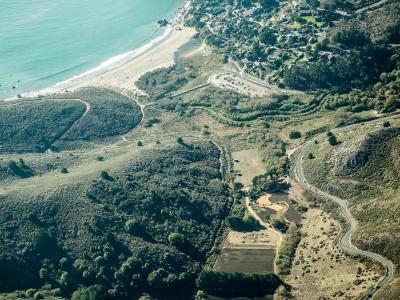Fisheries Restoration: Planning for Resilience
March 11 - 14, 2015
Lagunitas Creek Watershed: Stem to Stern Salmon Enhancement
11 March 2015
Field Tour Coordinators:
Gregory Andrew, Marin Municipal Water District
Ross Taylor, Ross Taylor and Associates
Tour Overview
Lagunitas Creek in western Marin County is a coastal watershed with a drainage area of approximately 100 square miles. Lagunitas Creek supports the largest and most stable population of endangered coho salmon in Central California as well a robust population of threatened steelhead trout. Numerous habitat restoration efforts and monitoring studies are ongoing which are consistent with CDFW’s Recovery Strategy for CA Coho Salmon and the federal Recovery Plan for Central CA Coastal Coho Salmon.
This field tour travelled from the estuary to the headwaters and highlighted the following types of restoration activities:
- Estuary/Wetlands – we visited the recently restored Giacomini wetlands project within the tidally-influenced estuary of lower Lagunitas Creek and Tomales Bay. These areas are important nursery areas for juvenile salmonids making the transition from the freshwater environment to the ocean environment.
- Erosion Control – we examined completed road drainage improvement and bank stabilization projects that were implemented to reduce the introduction of fine sediments to important spawning reaches.
- Fish Passage – we stopped at two locations where migration barriers at road crossings were treated to improve the upstream passage of adult and juvenile salmonids. These sites will offer contrasting treatments – full replacement and retrofit of existing infrastructure.
- In-channel Habitat – we examined in-channel LWD structures placed to improve pool habitat for summer rearing juvenile coho salmon.
- Off Channel Habitat – we stopped at a location where off-channel alcove habitat was created. These areas provide over-wintering juvenile salmonids with important refuge from high flow events and are recognized as features that address a limiting factor for coho salmon in many coastal California watersheds.

